
19 Types of Retaining Wall Materials and Designs for Your Yard (2023)
Walls, used to retain masses of earth or other loose material in a vertical (or nearly vertical) position at locations where an abrupt change in ground level occurs, are called as 'retaining walls'.
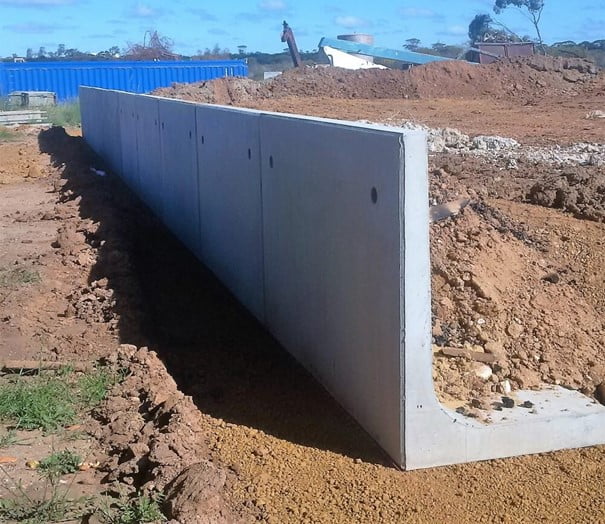
7 Different Types of Retaining Walls Which One is the Right Fit for You? Organize With Sandy
Cantilever concrete retaining walls have the same thickness from top to bottom and a very wide support footing. Buttressed walls are similar to the counterfort type but face in the opposite direction. Anchored retaining walls are mechanically supported by tethers. Gravity concrete retaining walls are the most commonly used type and typically.
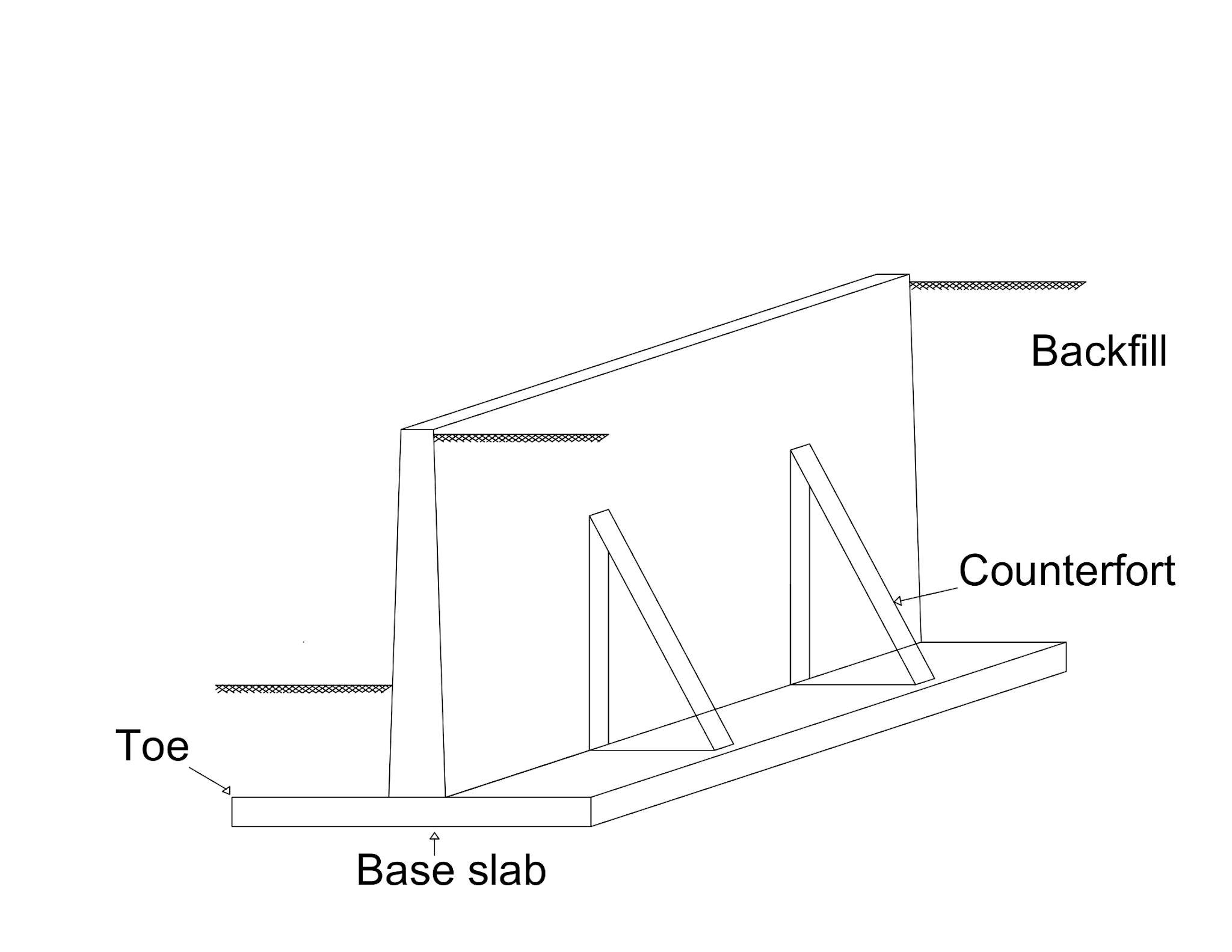
Retaining wall Types and Applications Learn Everything Civil and structural engineering
In cantilever retaining wall the pressure and other forces are withstand by the stem of the retaining wall and base slab. In counterfort retaining wall is provided the height of retaining wall is more than 6m. the walls also provided perpendicular to stem wall. The counterfort act as support to stem and heel slab.

the diagram shows how to install a concrete retaining wall with drainage and grounding options
A counterfort is basically a cantilever beam that serves the purpose of tying the wall's stem and the wall base together. This way the internal stress distribution in the wall is greatly reduced while the stability of the wall is also enhanced. This focus of this article is on designing a counterfort retaining wall.

Crosssection of a typical cantilever retaining wall. Download Scientific Diagram
Cantilever retaining walls are found best up to a height of 6m.For greater heights earth pressure due to retained fill will be higher due to lever arm effect, higher moments are produced at base, which leads to higher section for stability design as well as structural design. This proves to be an uneconomical design.

Retaining Walls Explained Types, Forces, Failure and Reinforcement Structures Explained
Article shared by : ADVERTISEMENTS: The following are the various types of retaining walls: 1. Gravity Walls 2. Semi-Gravity Retaining Walls 3. Cantilever Retaining Walls 4. Counterfort Retaining Walls 5. Buttressed Retaining Walls 6. Sheet Piles 7. Miscellaneous Types of Retaining Structures. Type # 1. Gravity Walls:

How to build retaining wall Counterfort retaining wall reinforcements step by step 3d
A retaining wall is a rigid structure build to retain the soil or the masses of debris at one end having different levels so that the soil masses don't slip from it. Thus, retaining walls are specially designed for lateral earth pressure and forces.

19 Types of Retaining Wall Materials and Designs for Your Yard (2023)
For diaphragm cantilever walls it is unlikely that friction between the soil and the wall will be developed because the wall is expected to settle along with the earth fill (small bearing capacity). Therefore, it is preferable to assume δ=0 and use Rankine's theory. For anchored diaphragm walls, the values illustrated in Table 1 can be used.
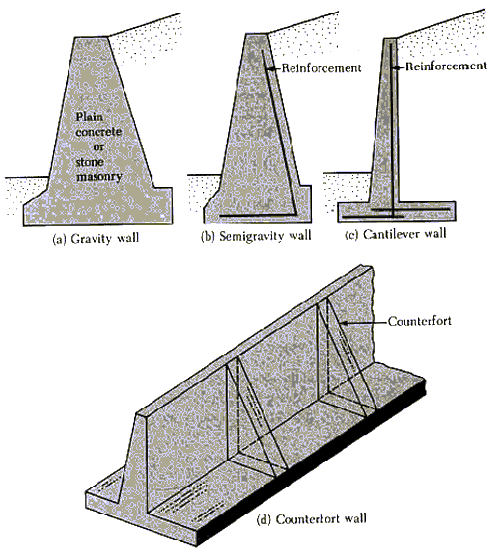
amudu RETAINING WALL
Counterfort retaining walls are more economical than cantilever walls for heights above 25 ft. Gravity Poured Concrete Retaining Walls Gravity retaining walls depend on their own weight and any soil resting on the concrete in resisting lateral earth forces. They are generally economical up to 10 feet in height for cast concrete structures.

COUNTERFORT RETAINING WALL PDF
Cantilever Retaining Wall Vs Counterfort Retaining Wall: What is a Cantilever Retaining Wall? These are short structures consisting of a thin wall referred to as the stem, which is usually connected to a horizontal slab or plate called its footing. The wall goes deeper into the soil, where it rests on a more robust base material.

Types of retaining walls
Cantilever does not required any support. Counter fort are provided as support. Economical below 6-7 m height. Economical above 7 m high. Uniformity of stress is not maintained. Uniformity of stress is maintained. All components are considered as slab. Counter fort itself is considered as beam, rest all components are considered slab.
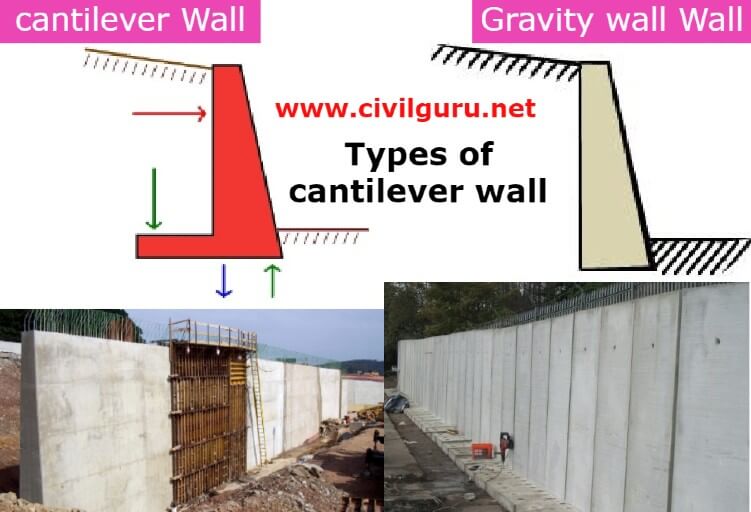
Cantilever Retaining Wall Counterfort Retaining Wall Retaining Wall
1. Introduction Cantilever retaining wall is widely used for cross-drainage works, for maintaining slope stability, for road embankments, etc. Sometimes retaining walls cause serious damage due to earthquakes and other dynamic forces.

Design of cantilever and counter fort retaining walls Retaining wall Retains Earth when
The main difference between cantilever retaining walls and the other walls mentioned is the way the foundation is designed. Tie back walls are completely different retaining walls and rely on pre-stress in ties that hold back the wall thereby retaining the soil.

9 Types of Retaining wall and their properties (What is a retaining wall?) civilogy YouTube
Parts of a cantilever retaining wall and its actions: 1. Vertical stem. Vertical stem in cantilever retaining wall resists earth pressure from backfill side and bends like a cantilever. The thickness of cantilever slab is larger at the base of stem and it decreases gradually upwards due to reduction of soil pressure with decrease in depth.

Retaining Wall Lecture 6 Counterfort Retaining Wall Design YouTube
The design of rigid retaining wall either Cantilever or Counterfort or Buttress retaining wall is based on pressure exerted by the retaining material, wall slope, height, ease of construction and stability.
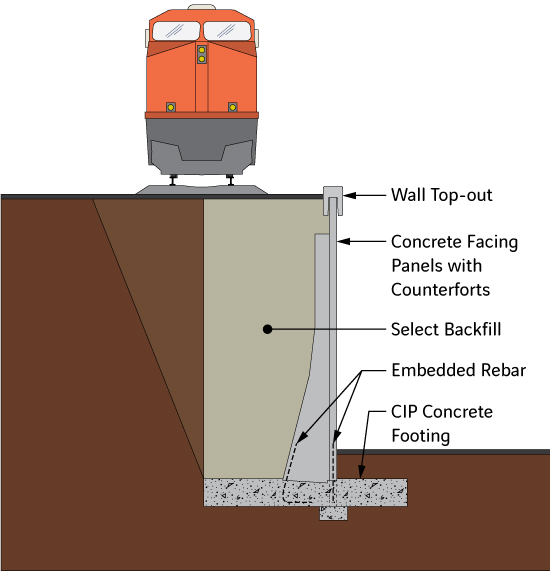
Techwall™ Precast Counterfort Retaining Wall System RECo
Contents show What Is Retaining Wall? It is a structure constructed to retain materials such as soil and maintain the surface of the ground at different elevations on either side of it. In this article, we've discussed different types of retaining walls.